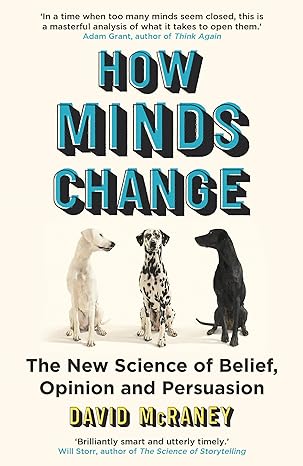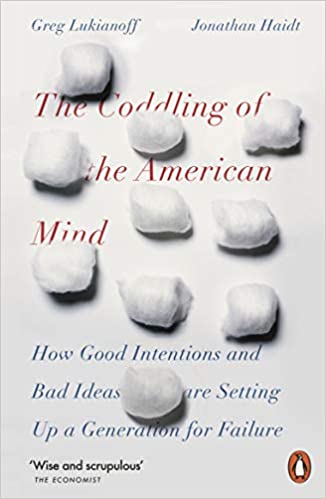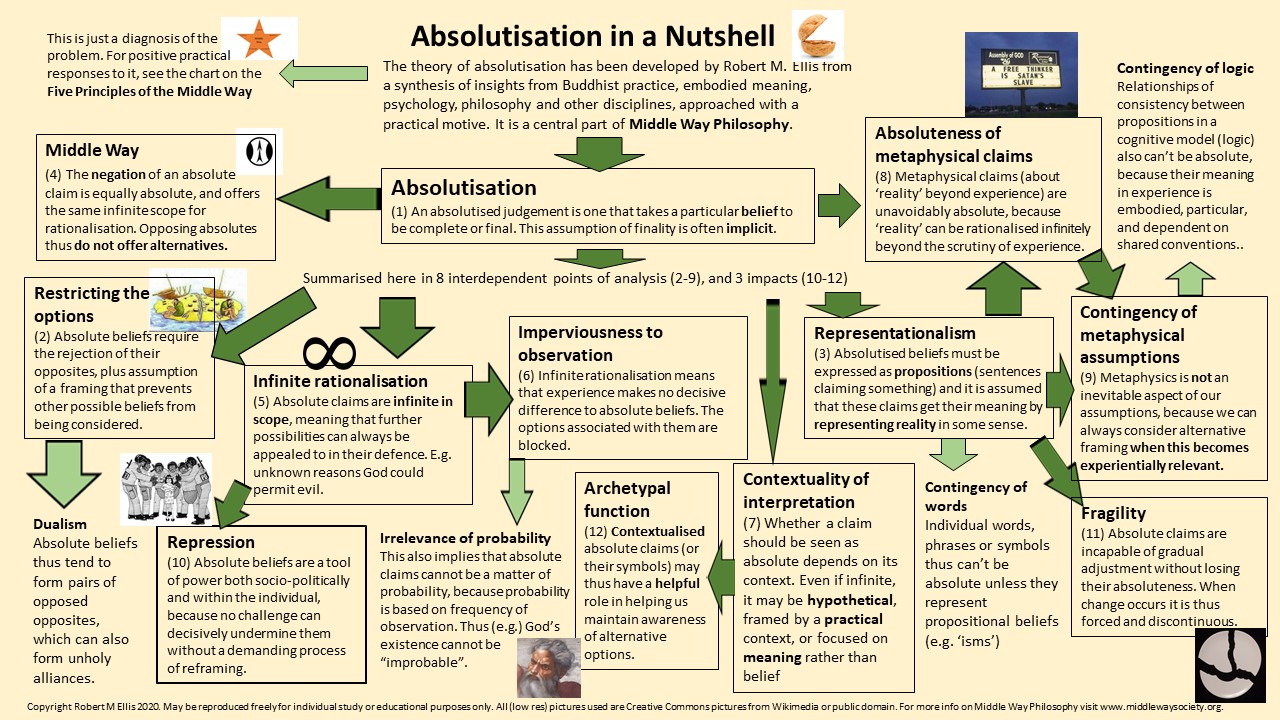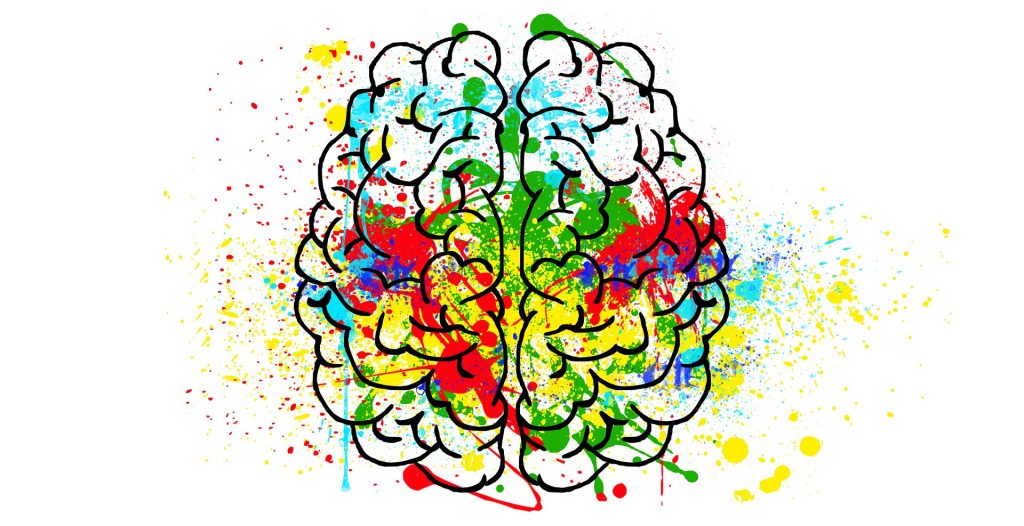How Minds Change: The New Science of Belief, Opinion and Persuasion by David McRaney (Oneworld, 2022)
Review by Robert M. Ellis

‘How minds change’ is rather a big topic: effectively the topic of judgement. How do we end up making a judgement about what to believe that is different from what we judged before? This 2022 book by David McRaney (previously the author of two popular critical thinking books) actually focuses mainly on how minds change for the better, rather than how they slip into dogma. That’s because it correctly detects that improving mind changing depends on having more options, the expansion of the mind rather than the maintenance of a narrow set of assumptions. We do not ‘change our minds’ in this sense by just switching from one set of assumptions to another, much as the narrow-minded may prefer to portray things in that way so as to close down the options.
So, the topic of ‘changing your mind’ has a large overlap with that of the Middle Way, particularly with the principle of provisionality as a key aspect of the Middle Way. However, the Middle Way has many interdependent elements, and includes the longer-term development of conditions that will enable us to ‘change our minds’. We can change our minds, in my view, because of access to options that avoid the limitations of absolutization. In absolutization there are only two options: our current absolute beliefs and their unacceptable negation. To ‘change our minds’ avoiding absolutization, wider options can be enabled by a variety of kinds of contextualization: embodied, meaning-based, or belief-based. This book, however, focuses only on the immediate conditions for changes of belief in the context of dialogue – not at all on the effects of any embodied practice, or of the use of the imagination, or even on the role of individual reflection in changing belief. However, within the limitations of that focus, it tackles the changing of minds rather well and very readably, drawing in the process on some engaging examples (flat-earthers, anti-abortionists, anti-gay Baptists, and so on), and on some helpful psychology, neuroscience and sociology. Its subtitle, ‘The new science of belief, opinion and persuasion’ accurately conveys that focus.
The most central point of this book is about the compassionate focus needed in effective persuasion. You can only succeed in persuading someone of anything through argument (that is, by giving them reasons to believe otherwise) if they are capable of contextualizing those reasons within the terms of their own feelings and commitments, what they find most meaningful. Argument may thus work (often only within a particular sphere) with those trained to value the usefulness of argument itself in justifying a position: usually by academic or professional training of some kind. With most people, however, persuasion can only occur by changing the context in which they think of the issue, which one may be able to do by asking friendly questions that widen and personalize the scope of the discussion. McRaney discusses ‘Deep Canvassing’ and ‘Street Epistemology’ as approaches that have successfully done this. For instance, in one memorable interview, an elderly lady was gradually enabled to reconsider her conservative view on abortion by recalling a friend from earlier life who had needed and had one. There a question like ‘Do you know anyone who has been personally affected by this issue?’ can evidently be a game-changer, because it induces people to switch from the absolutized abstraction through which they have been approaching the topic to a more contextualized view. That more contextualized view may be offered by the recollection of past experiences, of sympathy with other individuals, or of wider moral commitments.
To be able to do this, of course, one needs to be able to by-pass any kind of stress response, which can be triggered by any kind of expression of disagreement without a reassuring context. In the interviewing techniques investigated by McRaney, this was done just by a friendly approach, reassuring the interlocutor that the interviewer was not there to make them look silly or to pressurize them, and by asking questions of a kind that people often like to be asked – that is, about the experiences that have led them into their views. What McRaney does not note here are the wider possible ways of avoiding stress responses and triggering wider options that are already widely used in other contexts, such as the use of mindfulness, of imaginative re-creation and/or embodiment, of mediation techniques, of psychotherapeutic techniques, of familiarization with the background and different arguments through education, or of a deliberate programme of reflection for an individual (as in journalling). Many of these could probably not be used in the kinds of specific situations discussed by McRaney (such as interviewing a stranger on the street), but they are central to his wider topic of how minds change.
Another way of avoiding perhaps habitual absolutized responses is the use of incrementality, which is an aspect of many of the approaches to helpful canvassing and interviewing discussed by McRaney. Typically this involves asking an interlocutor to place their opinion on a scale of 1 to 10, or 1 to 100. This can often force people to consider whether their opinion really is as absolute as their initial expression of it may have suggested. For instance, are they 100% anti-abortion, or only 90%? If they say only 90%, it’s then fairly unthreatening to ask what the basis of the 10% of openness to the other approach might be. After a friendly conversation that opens up new options, they may be asked again if their point on the scale has moved at all – and quite often it has. This is not a dramatic conversion threatening the place of the person in the group they may identify with at one end of the debate, but a humanizing and individualizing process that helps people engage with more of the complexity of what they’re thinking and feeling.
Social conversions are in any case probably best avoided, not only because in some circumstances they may threaten our social (and thus possibly our economic or political) position, but because they often mark flips in which one absolute position is merely replaced by its opposite. The techniques discussed by McRaney don’t seek to convert anyone, but rather to help them autonomously consider more options and thus develop a greater understanding of uncertainty. When applied to judgement, this kind of understanding is much more likely to result in decisions that address the complexity of conditions. However, there are obviously some situations where we do have to come down on one side or the other – as when voting, or when deciding on any other kind of political commitment, such as joining a party. Here, McRaney rightly observes that what proves important to people in making those choices wisely is whether or not they have passed a particular tipping point in which the need to address wider feelings or conditions trumps the ‘conformity threshold’ (p.277).
McRaney also recognizes the negative effects of social media or other online interaction on raising the conformity threshold (which I would see as the point where other options become available beyond the absolutes maintained by a group that is influential on an individual). Although the internet can make us more widely aware of new options, it often has the reverse effect, because it reinforces social conformity without the relatively emollient effects of face-to-face contact. The stakes seem higher online, because we often have to explicitly agree with the group’s line to maintain our membership of the group (unless it is an unusually liberal or academic group that prioritizes provisionality in certain respects as part of its culture). When we are face-to-face, we instead have all sorts of other reassuring unconscious links with other members of the group, and become less solely dependent on taking a conforming position on hot-button issues to maintain bonding.
McRaney also helpfully recognizes the relationship between absolutizing a belief and absolutizing its source. If we have justified a given belief (say, that the earth was created in seven days), from a particular source whose authority is then taken to be absolute and unambiguous (say, the Bible), then, of course, questioning the belief means that we then become more open to questioning the source, and also questioning other beliefs that we have justified from that source (p.149). This could, of course, lead us on into further observations about the cultural role of metaphysical belief systems claiming authority and their interdependence with absolute positions taken by individuals – but this is not an area McRaney explores. In the larger perspective, though, I don’t think we can understand how minds change without fully acknowledging the cultural entrenchment of the forces that prevent them from changing.
The same goes, in more positive terms, for our understanding of confidence: how we can maintain the embodied and experiential basis for full-heartedly but provisionally justifying our beliefs. McRaney observes that “subjects who got a chance to affirm they were good people were much more likely to compromise… than people who felt their reputations were at stake” (176). The recognition of uncertainty in our beliefs does not mean we need to be apologetic about them, or to undermine our basic sense of security that we are ‘good people’. McRaney emphasises the social aspects of that – that we don’t help by being confrontational – but I felt he could also say much more about the prior psychological conditions for that sense of security. In individual experience, this may go back to secure attachment in childhood, but it also owes a good deal to our general physical state, level of mental awareness, and ability to draw on a rich base of cultural support that maintains our sense of meaning and offers sources of inspiration.
Overall, then, I felt that McRaney’s book was a very useful presentation of the effects and implications of some recent research on interviewing techniques and their effectiveness, along with some interesting examples of encounters between more and less dogmatic groups (Westboro Baptist Church and LGBTQ campaigners, flat earthers and the rest, 9/11 ‘truthers’ and their detractors). It lives up to its subtitle, but is, however, a rather narrow interpretation of its title. There is a lot about how minds change that is not even mentioned or remotely recognized, because of the intense focus on a certain area of research and application (plus an apparent ignorance of areas like mindfulness and the arts, which can have a big input to this topic).
The narrowness of the focus was also reflected in certain assumptions and striking omissions even within the field of science. There is no mention at all of brain lateralization, despite its well-evidenced relevance to precisely the processes of ‘accommodation’ (reinforcing feedback loops maintaining a fixed belief) and ‘assimilation’ (balancing feedback loops adapting to new information) that he takes from Piaget. These two processes are overwhelmingly the business of the left and right hemispheres respectively – as detailed not only in the work of Iain McGilchrist and all the evidence from medical and neuroscientific research that he draws on, but also from studies of animals going as far back down the evolutionary tree as early fish. Much further light is shed on our difficulties in changing our minds by the over-dominance of left hemisphere processes, imposing abstract, conceptually defined beliefs associated with goals on our more open right hemisphere awareness of the products of the senses and imagination.
There is also a lot of dependence on evolutionary psychology in McRaney’s account of human development (e.g. p.179). This tends to see human learning quite narrowly as motivated only by survival and reproduction, which have then shaped our genetic heritage, whereas the wider picture is that much of our psychological and neural heritage is epigenetic, and that our motives are also shaped by more subtle goals higher up the hierarchy of needs: social connection, self-expression, and even what Maslow calls ‘self-actualization’ have emerged as motivators for human development that may at times contradict the evolutionary dictates of survival and reproduction. McRaney also (presumably following his sources) tends to use quite mechanistic language about human learning, referring to us as ‘learning machines’ (p.179), as though learning was linear rather than a matter of the interdependence of complex systems. These kinds of assumptions are scientistic rather than scientific, and may reflect the narrow philosophical assumptions of academics in certain fields.
This topic also requires the use of a lot of philosophical language that is often used equivocally, so in my opinion it’s thus hard to write about well without a good deal of rigorous consideration. Prime amongst this language is the use of the term ‘truth’, where McRaney continues the common equivocal use, as illustrated by the titles of two of his chapters: ‘post-truth’ and ‘the truth is tribal’. ‘Post-truth’ means that there is no longer an absolute truth, but if truth is tribal, it is merely the set of beliefs that people take to be ‘true’ in their tribe. Constant equivocal switching between these two senses of ‘truth’ (absolute and relative) has already caused mass confusion, and it’s disappointing that McRaney does not query or note it. In my view we need to be extremely rigorous about this if we are to make any impression on the confusion: the truth is not tribal. Beliefs are tribal; basic assumptions are tribal; delusions are tribal. The truth, on the other hand, is something we simply don’t have access to, so we can use the concept as a source of inspiration, but should never claim to have it. Similar points apply to the widespread equivocal use of terms like ‘knowledge’ and ‘meaning’.
To develop a broader vision of how human minds change, then, I would very much recommend reading McRaney’s book, but not taking it as a complete account of the subject, even in outline. Those involved in political campaigning may particularly find his information about canvassing and interviewing techniques helpful, and his overall message of the need for compassion in communication can be an inspiring one. However, this account needs to take its place in a wider view: one that begins with an appreciation of basic uncertainty, is prepared to question all dogmatic assumptions (even those of social and neuro scientists), and offers a full appreciation of the ways minds need to change through individual practice that cultivates awareness and imagination – not merely through socio-political discourse, however important that may be in certain contexts.







